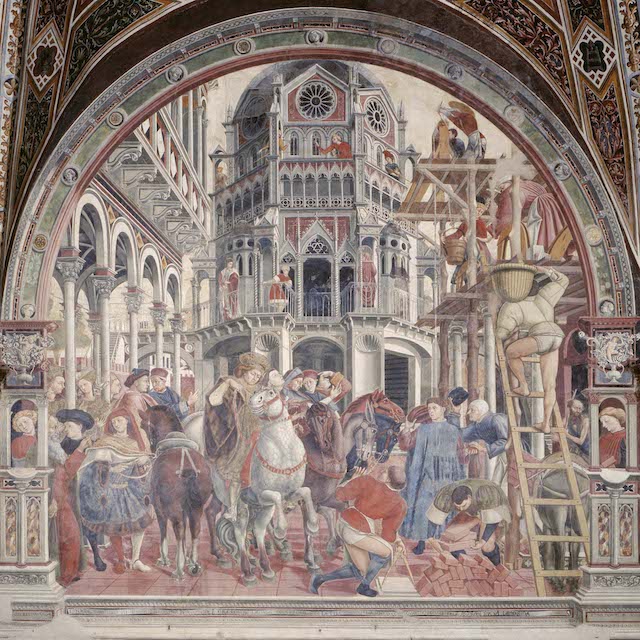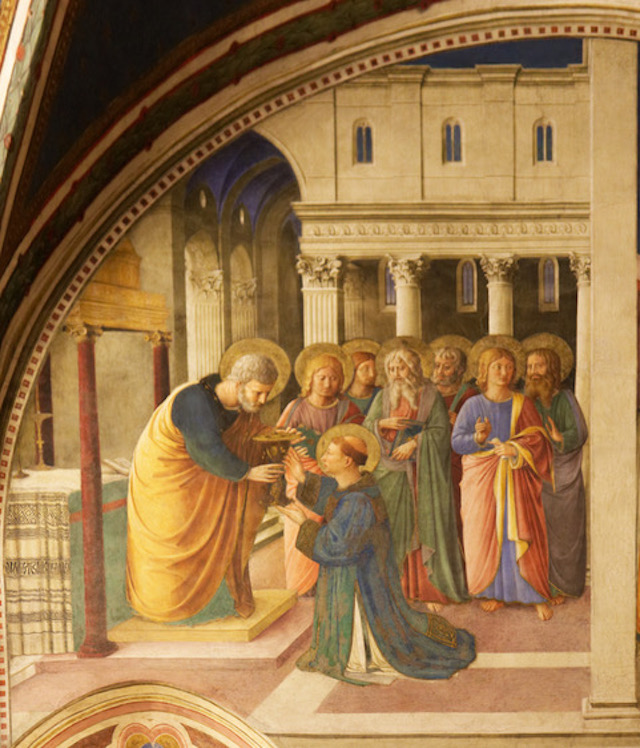Dr Livia Lupi - Research
Painting Architecture in Early Renaissance Italy
Innovation and Persuasion at the Intersection of Artistic and Architectural Practice
Although architectural structures became increasingly more prominent in painting from the fourteenth century onwards, showcasing ingenious structural solutions and intricate ornamental designs, they are often interpreted as more or less convincing ways of representing pictorial space or as lesser counterparts to built architecture.
Painting Architecture in Early Renaissance Italy is a book project aiming to change our understanding of architectural settings in Italian painting. It posits that architecture in painting was instrumental in redefining the status of architecture, providing a platform for experimentation and highlighting the rhetorical potential of architectural forms. By emphasising the inventiveness and agency within the narrative of architectural settings, the project underscores the architectural imagination of artists and sheds light on the productive intersection between artistic and architectural practice in Italy at this time. Discussing in detail the striking architectural settings of four fresco cycles from four different parts of Italy, the book explores the representation of architecture in painting as a broad phenomenon revealing artists’ wide-ranging interest in architecture, and positing they were instrumental in promoting architectural innovation.
By focusing on fresco cycles as a medium where built structure and pictorial surface are part of the same unit, the study explores artists’ approach to both two and three-dimensional buildings, at the same time underscoring the communicative abilities of painted buildings in connection to a narrative. This highlights that architectural settings are a form of visual rhetoric, changing how architectural forms are perceived as they reflect an artist’s architectural inventiveness and the prestige of the patron.
This study considers the late fourteenth to early fifteenth century as a turning point for the representation of architecture, arguing for the precociousness of architectural design in painting in comparison to built projects. Exploring the intersection between artistic and architectural practice in conjunction with rhetorical theory, it proposes that a better understanding of the relationship between painting and architecture during this key moment will offer new insights into the later development of architectural practice through drawing, and especially into sixteenth-century painter-architect figures, as well as clarifying the powers of persuasion of architectural forms. Therefore, the book’s conclusions will feed into an article closely examining the relationship between architecture in painting and drawing, from fourteenth-century architectural settings to project drawings and seventeenth-century architectural capricci.
Finally, this research project will also inform a further three articles: the first, focused on reassessing craftsmanship; the second, exploring the understanding of architecture through ideas of size, place and space; and the third, arguing for Veneto artists’ specifically architectural approach to painting c.1360-c.1470.

Fra Angelico, Ordination of St Stephen, Nicholas V Chapel, 1448-1450, Vatican Museums. Fresco.

Domenico di Bartolo, Building of the Hospital, 1443, Santa Maria della Scala, Siena. Fresco.
